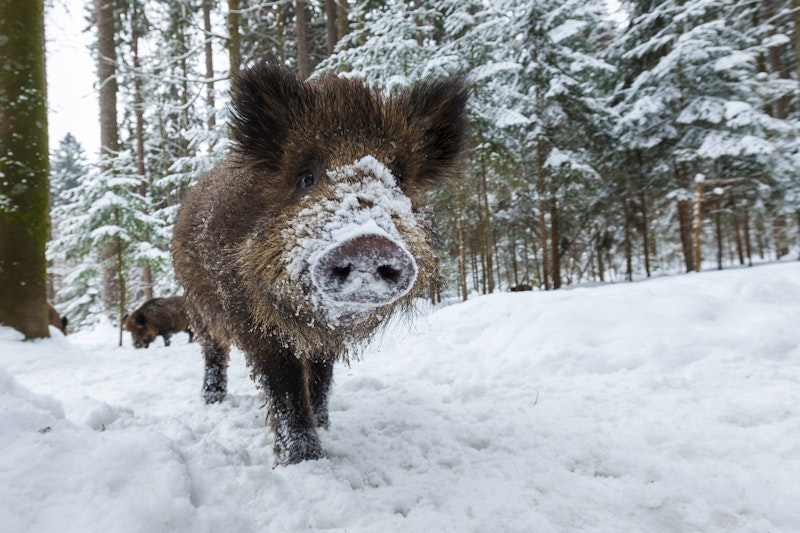Disney’s most talented anthropomorphic artists would exhaust every trick in their trade to make the Canadian super-pigs threatening to invade our northern border sympathetic—and fail.
There are an estimated nine million feral hogs in the United States, a third of them in Texas. They destroy environments, carry disease, and do billions of dollars of damage to agricultural production. It’ll get much worse should authorities charged with environmental and economic protections fail to halt the in-process invasion of northern pigs with a strategic response.
From an article linked from Free Range American: “Compared to the feral pig currently roaming the lower 48, the Canadian feral pig are more closely related to the European boar, with only splashes of pink, porky ancestry. They retain much of the hardiness of their Eurasian forebears, but with beefier bodies and large litters.”
These northland hogs are big and aggressive. Also alarming: they’re intelligent. It’s common knowledge that pigs are smarter than dogs, and even three-year-old children.
This from the website AZ Animals: “Pigs just barely edged out dogs for our list of the 10 smartest animals. While dogs have intelligence comparable to a toddler, pigs operate at a much higher IQ level. They are able to understand the concept of reflection at only six weeks old; that is something that takes human children several months to comprehend.”
Porcine IQ becomes unsettling when considered in terms of Canada’s aggressive ferals. These crafty, reflective beasts are building what the locals call “pigloos,” snow-burrows like those described in Jack London’s canine epics Call Of The Wild and White Fang, to survive the brutal northern winters. A large group of them can turn a fecund cornfield into a trodden mud pit in one night.
Authorities are gearing up to counter the super-pig invasion. All manner of interdiction strategies—drones, recon aircraft, remote controlled traps and fusillades of gunfire—will be deployed against the invaders by northern border states like Montana, North Dakota, and Minnesota. A reporting platform currently used in Texas will be utilized, allowing people to “snitch” when they see hogs, thus concentrating abatement efforts. When located, the hogs will be slaughtered en masse. But some, perhaps many, will get through.
There’s disagreement about whether these animals can be considered a viable food source. Stateside hunters who’ve made a sport of culling the rapidly-reproducing hordes attest to the fine flavor of the meat, but others have pronounced it stringy, tough, and inferior to mass produced pork products.
Tasty or tough, the Super Pigs are coming, and these aren’t overpopulating, crop-destroying, heartland feral hogs. They’re worse. Their climate-adaptive ursine coats lend a sinister aspect absent from the familiar scraggly, bare skin of feral pigs. Their visage evokes images of werewolf hogs, mythological beasts, a Stephen King-esque horror moving in packs through the primeval forest buried in our ancestral subconscious.

